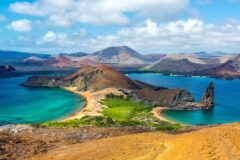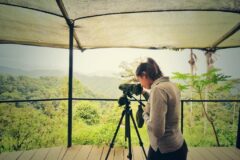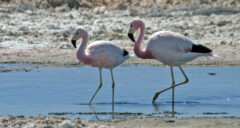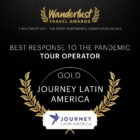More to Machu Picchu Than the Inca Trail

Machu Picchu – the Lost City of the Incas – is undoubtedly the highlight of a first-time trip to Peru for many people. Since its ‘discovery’ by Hiram Bingham in 1911, annual tourist numbers have been gradually increasing to the level where around a million people now visit each year.
The Inca Trail was the original – and remains a very popular – way of visiting Machu Picchu, whilst testing your fitness too! However, if you’re taking the train instead and staying overnight there are still plenty of ways to get active and see the ruins from a different perspective after your guided tour:
Huayna Picchu. Huayna Picchu is the mountain that towers behind the citadel and frames the iconic view of the ruins complex that you see in many photos. Its peak stands at an impressive 2,720m and visitors looking to see the enigmatic site from a unique viewpoint can choose to climb the mountain on the second morning of their stay.
Starting from trail entrance at the northern end of the site, you’ll ascend more than 300 metres in the space of just over a kilometre’s hiking before being rewarded with the spectacular vista over the complex (and the ant-like people below!).
The climb can take anywhere between thirty and ninety minutes and is not technically difficult: it can be slippery and there are some steep (almost vertical) sections where you’ll need to hold the handrail, but taken at your own pace it shouldn’t be a problem. That being said, if you have a fear of heights, it’s worth noting that some sections of the path have sheer, unprotected drops which could prove challenging.
Once at the top, feel free to take your time exploring the terraces and temples, before retracing your steps down the mountain. Those feeling particularly energetic can take the detour to see the Temple of the Moon on the way down.
Climbing Huayna Picchu can only be done if you hold a valid permit and numbers are strictly limited to 400 participants per day – split equally between two groups: one departs at 7:00am and one starts at 10:00.
Machu Picchu Mountain is the second big climb at the ruins site is up Machu Picchu Mountain. Machu Picchu Mountain is the dominant peak to the Southern end of the site – directly opposite Huayna Picchu – and its 3,000m summit gives spectacular 360 degree views over the whole valley and site.
Like Huayna Picchu, the number of entries to climb Machu Picchu Mountain are limited to 400 per day between 7:00 and 11:00am. However, since it’s much lesser known it’s rarer for the entrance tickets to sell out.
This challenging trail is one which needs at least 2 to 3 hours to complete as you will climb around 600 metres up a narrow stony, rocky path. During the ascent, you’re likely to encounter llamas, orchids, and plenty of steps and boulders to pull yourself up with!
The beginning of the trail is located at the southern end of the agricultural terraces. From the guardsman’s hut, take the path towards the Sun Gate and you’ll find the entrance on the right hand side (signed Montaña Machu Picchu), up a narrow stepped pathway.
Sun Gate – Inti Punku or the Sun Gate sits to the south east of the ruins complex at 2,745m (higher than the peak of Huayna Picchu). For those of you hiking the Inca Trail, it’s from here that you’ll get your first, coveted glimpse of the Machu Picchu after your three-day hike – and what a view it is too!
If visiting the ruins for a day, it’s a ninety-or-so minute walk up cobbled paths from the guardsman’s hut to reach the gate (follow the signs, no permit required). Whilst it’s a steep hike, there are no sheer drops making it ideal for those looking for a spectacular view but who don’t have the head for heights to climb Huayna Picchu.
The route can be busy with Inca Trail groups in the morning, but you should still get some time to yourself when you arrive at the Sun Gate. If travelling in February, you may well encounter some works being done to the path, but it’s normally still passable.
If you’re feeling fit and don’t mind an early start, it’s possible to conquer Huayna Picchu and the Sun Gate in one day: you’ll definitely feel like you’ve earned your lomo saltado and bottle of Cusqueña (try the malt version) at the end of the day!
Inca Bridge – The Inca Bridge makes up part of a mountain trail, which was believed to be the Incan escape route from Machu Picchu. Carved into the side of the mountain, the narrow pathway is not for the faint hearted – there are steep unprotected drops to the side – but it’s well worth it for the stunning bird’s-eye views down into the valley.
The bridge itself would have been nothing more than a log that could easily be dismantled in the event of an escape, ensuring that any pursuers could not follow. Nowadays, there are a couple of planks of wood representing the bridge, but tourists are forbidden to cross on safety grounds.
No permits are required to hike the 15-30 minute trail, which leads due west from the Guardsman’s Hut, but visitors are required to sign in and out at the control point. The stone steps at the very end of the trail can be slippery when wet so it’s worth taking your time and holding on to the handrail.
The lush foliage you pass through en route is a haven for insects, so it may be a good idea to take some repellent.
The above four activities should provide plenty of exercise and let you see the ruins from a different perspective. As there are no places within the complex to buy food (water is available from the entrance to Huayna Picchu if you forget to pack it), I’d recommend taking some high energy snacks in your day pack.
We’re often asked what kind of footwear we recommend taking on a trip to Peru and if hiking boots are really necessary if not taking part in an extended trek. If you normally hike in full boots and have the space in your luggage to take these then the extra ankle support could be useful when going up and down the stepped terraces you’ll encounter at the different archaeological sites. However, any kind of comfortable walking shoe, provided it has a good grip (preferably waterproof just in case!), will be absolutely fine for most people.
Tailor-made holidays
Flexible, custom-made holidays to Latin America created to match your exact requirements: our tailor-made itineraries are as unique as the clients for whom they are designed.
Design my tripPapagaio
Your edit for Latin American inspiration
Our exciting range of articles on Latin America explore everything from iconic destinations and lesser-known cultural gems to delicious traditional recipes. You’ll also find exclusive travel tips, first-hand client reviews and the chance to get your personal questions answered by our travel experts.
View Extraordinary Inspiration






































